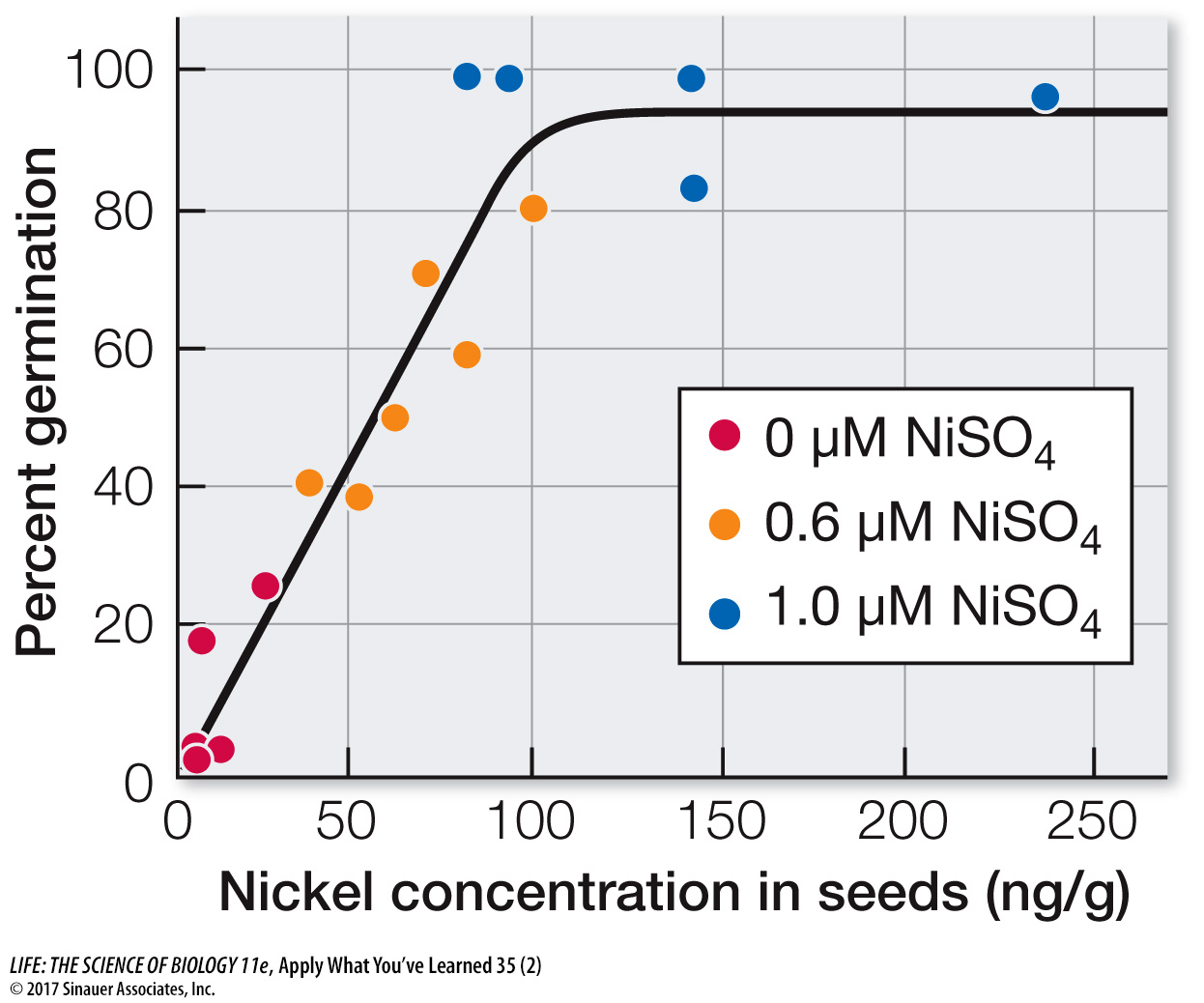Apply What You’ve Learned
Review
35.1
Plants receiving insufficient quantities of essential elements can be evaluated by observing symptomatic changes in physical features and/or growth.
35.1
Experiments using hydroponic growth conditions have allowed scientists to determine the essential elements plants need for growth.
Original Paper: Brown, P. H., R. M. Welch and E. E. Cary. 1987. Nickel: A micronutrient essential for higher plants. Plant Physiology 85: 801−803.
Both barley and wheat are cereal crops used for feeding humans and livestock, and the two have many similarities. Because of its characteristics when fermented, however, barley is favored over wheat for beer making. When you consider how much beer is brewed around the world, it’s no wonder that researchers have spent considerable effort looking for ways to optimize barley growth.
Optimizing growth of any crop can be accomplished if the crop’s nutritional requirements are known. In the case of barley, one research group investigated the element nickel as a possible essential micronutrient. Earlier studies where a single generation of plants was grown without Ni indicated that it was not a mineral requirement. They began by creating a stock growth solution containing extremely low amounts of nickel ions (less than 30 nanograms per liter [ng/L]). Then they divided this stock solution into three containers and added nickel sulfate (NiSO4) to two of these. This step produced supplemented concentrations of 0, 0.6, and 1.0 micromolar (μM) nickel sulfate in the three final solutions. These were then used as experimental growth solutions to grow three groups of barley plants over three generations under different nickel concentrations.
The researchers harvested seeds from third-
| Plant group | Supplemented nickel concentration in growth solution (μM) |
Total seed mass per plant (grams dry weight) | Total number of seeds harvested per plant |
|---|---|---|---|
| 1 | 0 | 7.3 | 175 |
| 2 | 0.6 | 7.5 | 179 |
| 3 | 1.0 | 8.4 | 195 |
Next, one portion of the seeds from each group was analyzed for nickel content. The other portion from each group was placed in nickel-

Questions
1.
The researchers concluded that nickel is an essential micronutrient of barley. Do you agree with their conclusion? Explain your answer.
Yes, some of the data support the researchers’ conclusion that nickel is an essential micronutrient. Specifically, the germination data presented in the graph show that seed germination rate is related to the nickel quantity present in the seed. Seeds produced from plants grown under extremely low nickel concentrations have significantly lower germination rates than seeds produced from plants grown in higher concentrations of nickel. Because barley plants have high rates of germination failure without nickel, they cannot complete their life cycle in the absence of this nutrient. Over three generations, the plants were gradually depleted of nickel. This makes nickel an essential nutrient.
2.
Analyze the data about the mass and number of seeds produced by the third-
The data show that the mass of seeds produced by a plant is not affected by lack of nickel availability to the plant. This means that production of seeds within a parent plant occurs through processes that are not dependent on nickel. This conclusion does not contradict the conclusion from Question 1, which states that germination of seeds is dependent on nickel. Seed production within a parent plant and germination of the seed once it leaves the parent plant occur by two separate processes, only one of which is dependent on nickel.
3.
Why didn’t the researchers use soil to grow the barley plants? Will the experiments have to be repeated using soil as a growth medium, or can the results of this experiment be used to make predictions about plants grown in soil as well as in growth solutions?
Because soil is a complex mixture of organic and inorganic matter, it is more difficult to control the nutritional content of soil than it is to make a liquid growth medium with a defined and well-